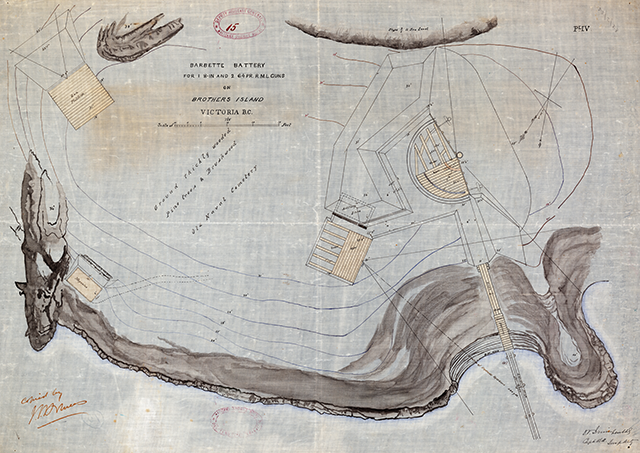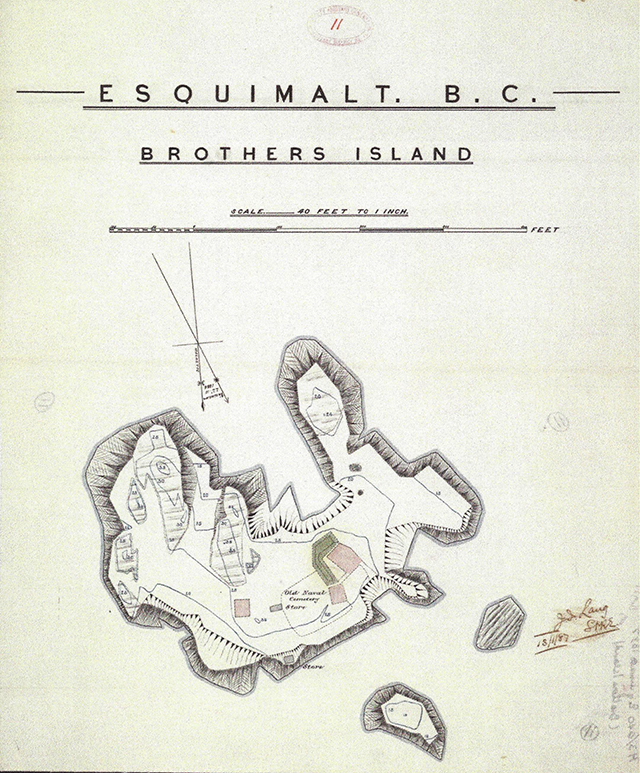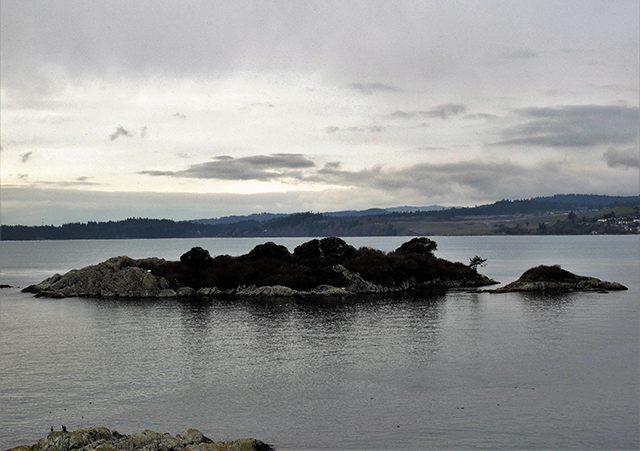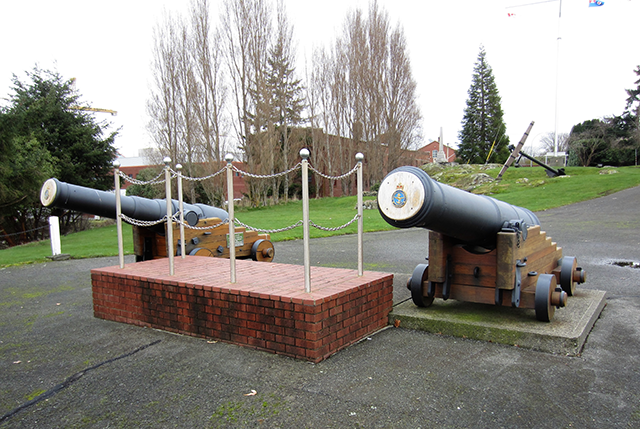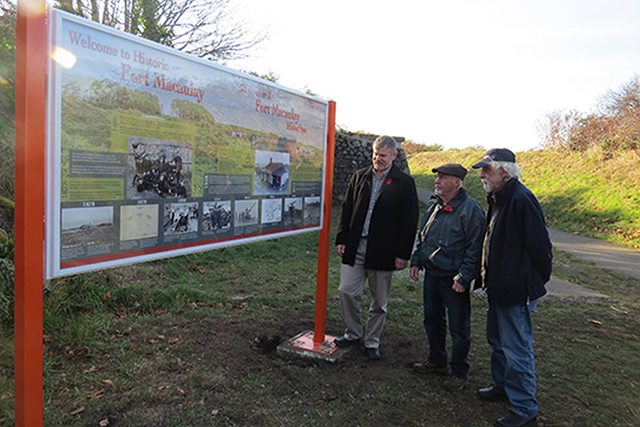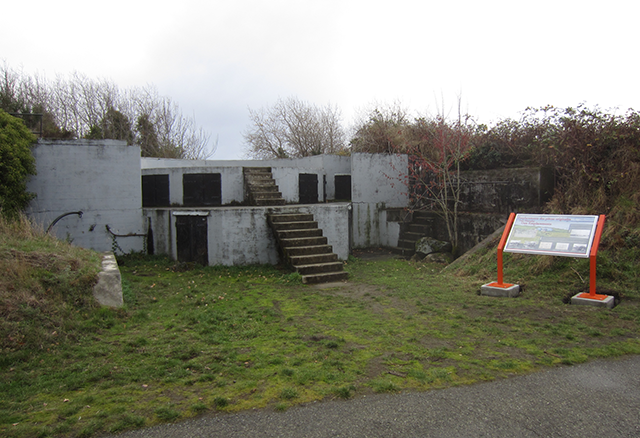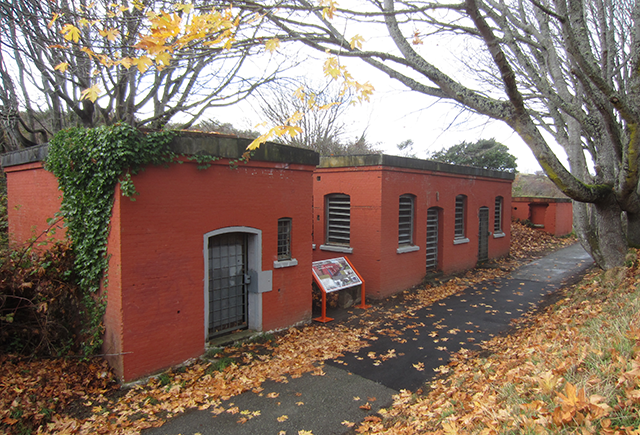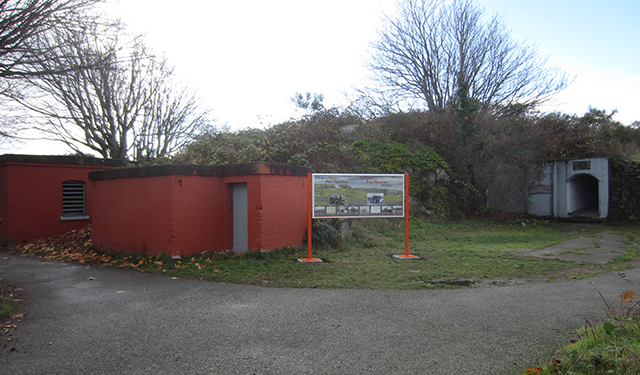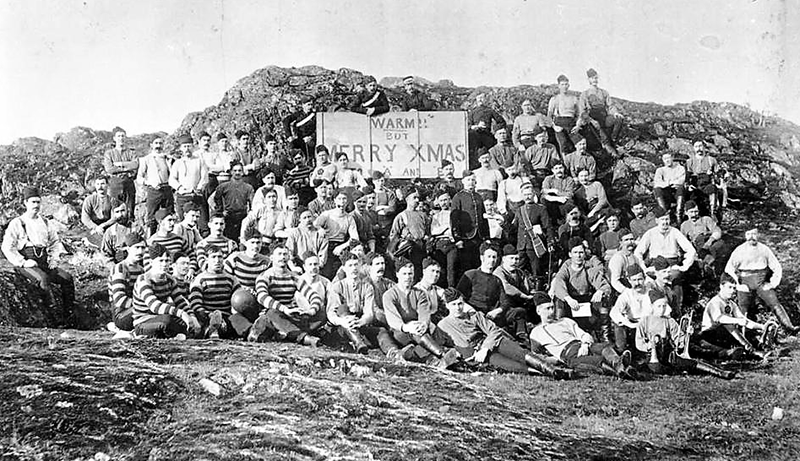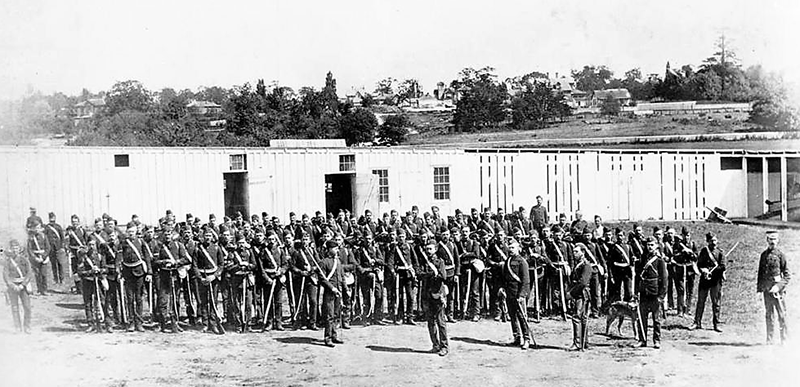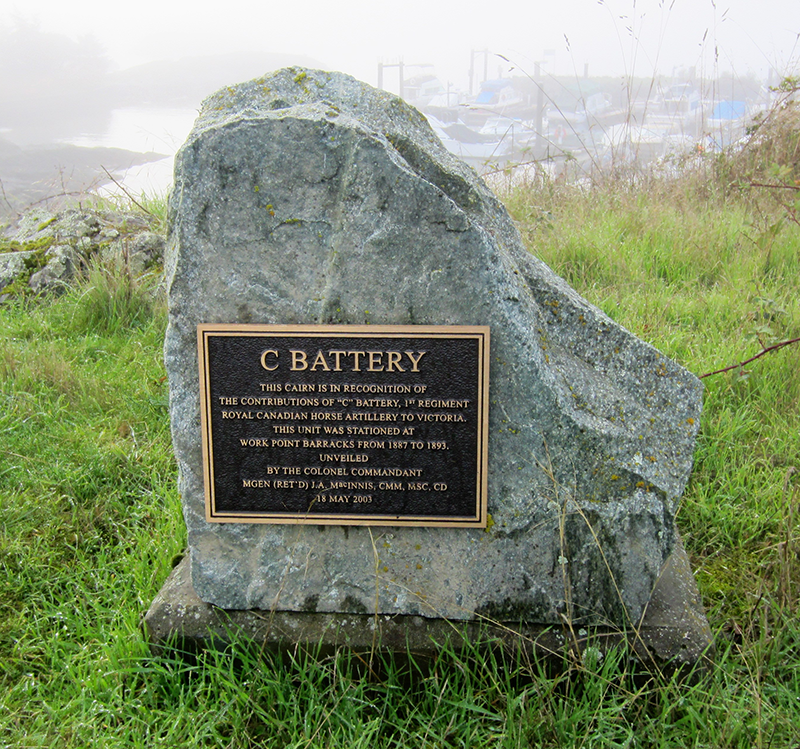 |
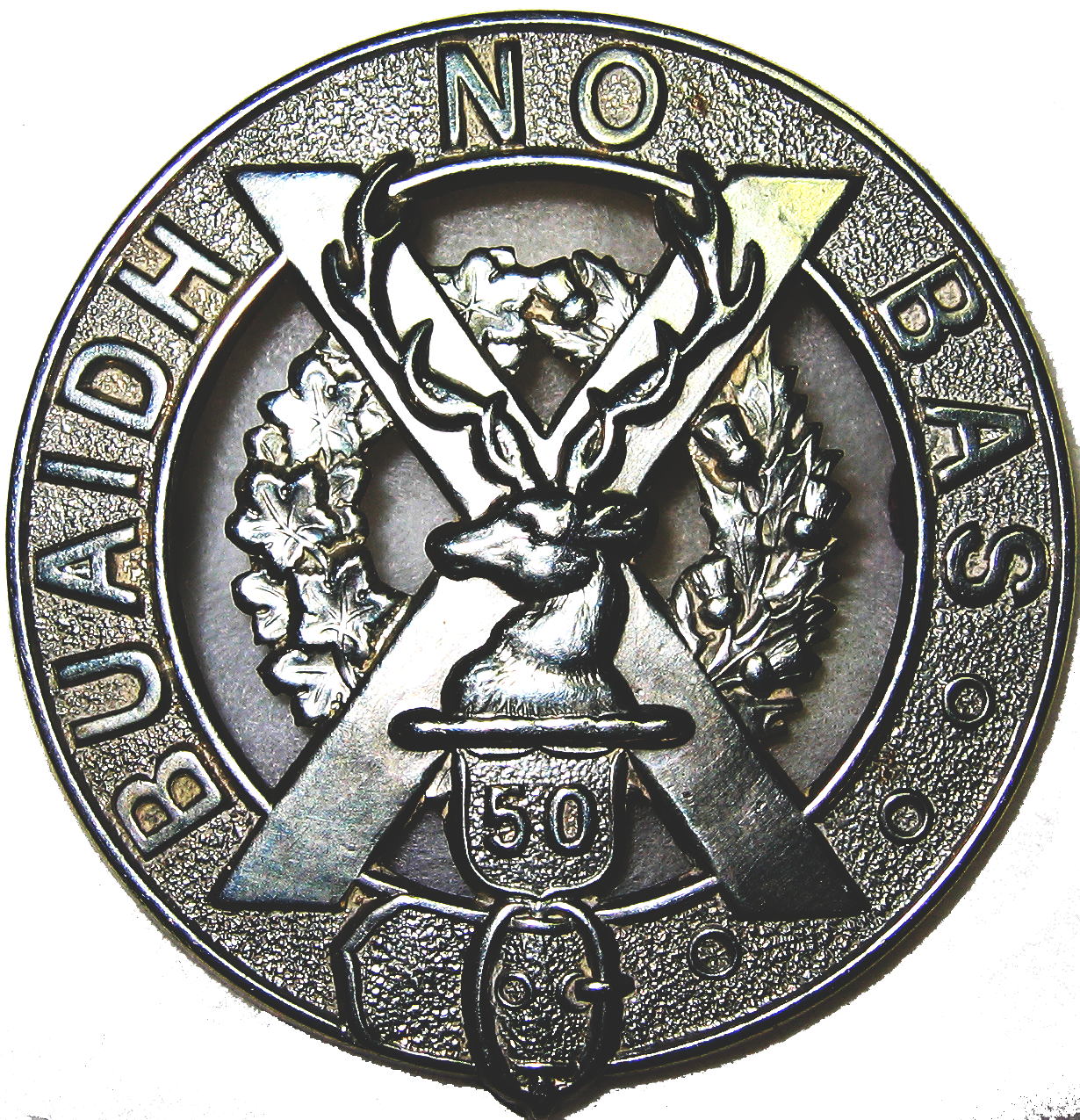 OPCMHVisitor No.: |
HISTORY OF WORK POINT BARRACKSby Jack BatesPART 10 — 1995 to 20222017WORK POINT BARRACKS Click here to view Work Point Barracks on the Victoria Harbour History website. COLONIST FIRST NATIONS TO CLOSE, UPGRADE WESTBAY MARINA RV PARK Click here to read Colonist article (PDF). VICTORIA NEWS WESTBAY MARINA RV PARK
VICTORIA NEWS HMCS RAINBOW HAD COLOURFUL PAST On May 4, 1910, by virtue of the Naval Services Act, the Royal Canadian Navy came into being. But there was one important issue – the navy had no ships. Negotiations with the British government soon rectified the situation resulting in the purchase of two ships – the cruisers Niobe and Rainbow. Both were considered obsolete and were offered up for scrap or for sale. Niobe, built in 1897, was the larger of the two, and was stationed on the Atlantic coast. The smaller Rainbow arrived at Esquimalt on November 7, 1910. Her crew was made of Royal navy personnel and fleet reservists who had signed on for two years. After her arrival, Rainbow was involved in “public relations” cruises and training, the latter important if she was to make up for the crew members that would return to England. In 1913 she underwent refit and repairs and in May 1914 she was used to transport troops to Vancouver during the Komagata Maru incident. Three months later the world was at war and Rainbow was assigned the task of protecting British shipping stretching south to Panama. It was known that two powerful German cruisers, SMS Leipzig and SMS Nurnberg, were operating off Mexico and California when Rainbow was put to sea to patrol our coast. Fortunately, the Germans were not encountered as Rainbow with its light armament may not have fared well. But she did see some action. On April 23, 1916, while on patrol, Rainbow seized the German-owned but American flagged schooner Oregon following up nine days later by seizing the Mexican flagged Leonor and returning to Esquimalt with the prizes in tow. Rainbow’s most interesting assignment came early in 1917 when she was used to secretly transport $140,000,000 in Russian gold bullion between Esquimalt and Vancouver where the money was placed in trust by the Russian government worried about the impending Russian Revolution. The same year Rainbow was “paid off” and her crew sent to the Atlantic coast where they were badly needed to fight the German U-boat menace. Rainbow was re-commissioned for a brief period as a depot ship but met her final fate when she was sold for scrap to the Seattle firm of Neider and Marcus in 1920.
Re the Komagata Maru incident, Rainbow escorted the passenger ship with its cargo of British subjects out of Vancouver Harbour when it was forced to leave. Dennis J. Duffy. See photos a-01615 and d-07570 at the Royal BC Museum. OPCMH The historical former Work Point Barracks Guardhouse, the landmark entrance point to the barracks since 1890-1891, will have a new role in 2017. It will be the gatehouse office and store for the “Salish Seaside RV Haven” to be administered by Xhamasung Holdings LLP, owners of the building since 2005 when it was purchased “fee simple” from Transport Canada. The 2483 Princess Patricia’s Canadian Light Infantry Cadet Corps, tenants in the guardhouse since 2011, has been evicted and is looking for a new operational headquarters in the Esquimalt area which suits the historical and current demographics of this cadet unit, and the numerous previous army cadet corps dating back to 1947, first located within Work Point Barracks. Having said that, my interests in the historical building since I “adopted” it in 2009 to preserve it from further depreciation and dis - repair, has resulted in brokering the tenancy of the cadet corps, provision of a new water service, co-ordinated municipal fire and services, new locks, new roofing with bird spikes, exterior painting (back to original), added attic insulation, upgraded interior fire protection and emergency lighting while doing general building maintenance inside and outside including the grounds with a rebuild of the back stairs. I also acted as a liaison on behalf of the owners for movie makers visits and dealt with an ICBC claim and repairs for them in 2015. Overall this has been a very rewarding venture as a “stakeholder” in the guardhouse and also purposeful by extending the useful life of the building through occupation by the cadet corps as their headquarters close to Work Point and its facilities. To this end I initiated the above projects and provided all the administration and maintenance resources while the owner provided the funds for the improvements. Since 2010 its address is 445 Head Street within the Township of Esquimalt; drop by and see the historical and unique features of this 1891 building.
The building is listed on the Esquimalt Community Heritage Register, approved June 20, 2011 with a Statement of Significance, and is now listed on the Canadian Register (Canada’s Historic Places) since January 12, 2017. ESQUIMALT COMMUNITY HERITAGE REGISTER CANADIAN REGISTER (CANADA’S HISTORIC PLACES) Previously when the Guardhouse was in the Federal inventory (DND and Transport Canada) it was FHBRO “Recognized” but forfeited that official designation when sold in 2005 to Xhamasung. However, within the terms of the sale, there was a clause included regarding heritage protection. This was ARTICLE 6 – HERITAGE ... Section 6.01 Heritage. It reads as follows: “The Purchaser agrees and covenants to protect the heritage value and character defined in the elements of the BUILDING 1001 (Guardhouse) as described in the Federal Heritage Building Review Office, Heritage Character Statement, attached hereto as Appendix E”. “Guardhouse – Appendix E – FHBRO Heritage Character Statement” This Guardhouse is one of only three within Canada with this historical reference. Also at the time of the sale, Transport Canada, who had jurisdiction at the time, prepared a precise 260 page “Heritage Record Report” covering the building. This report included floor plans, exterior and interior drawings, structural details, descriptions and photographs as required by Treasury Board Heritage Policy to record the state of the building at the time of sale. This detailed report is designed to protect the integrity of the historical aspects of the building. Hopefully the heritage references above, and the integrity of the building as it stands now, will be respected and adhered to in the future as it represents a theme in Canadian Defence history relating to the Coastal Defence of the Victoria-Esquimalt area of southwest British Columbia. See the FHBRO Building Report 89-205 for the evolution and history of Work Point Barracks including individual building reports in “1989” of this web site.
Lookout INVICTUS ATHLETES TRAIN ON BASE The Canadian delegation will be housed at Work Point for the duration of the camp April 3 to 8. Team Canada athletes, 90 in all, will be housed in Work Point barracks for the duration of their stay in preparation for the games. These games are an international competition for ill or injured and former military members, to be held in Toronto September 23 to 30. The “Soldier On” program, committed to supporting veterans and serving members with a permanent physical or mental health illness / injury, is organizing the Canadian team. Please visit the web site www.soldieron.ca for more information. April 2, 2017 “ALL NOW IN FRANCE” This title is derived from the silver plate bowl I assume was sent to James and Maria Bates from Fred in 1918. Inscriptions on the bowl are: “From FRED ALL NOW IN FRANCE”, “Sonny”, “Jim”, “B”, “1893” and “1918”. The bowl came to dad (Sonny) around 1992 from his sister Rose in Puyallup, Washington. The inscriptions refer that all three boys were in France in 1918, Sonny, Fred and Jim. 1893 was the year that James and Maria were married and B of course for Bates. Sonny was in the 29th Bn CEF, Jim was in the 8th Bn Oxfordshire and Buckinghamshire Light Infantry, BEF, and Fred was in the 4th Divisional Train, CASC, CEF. Sonny (Arthur) enlisted in the 48th Bn # 2 Coy in Victoria March 12, 1915 as a Drummer # 430523, listing his birth date as June 10, 1896, three years earlier than reality. He served in the 50th Gordon Highlanders militia unit in Victoria as a Bugler from August 10, 1914 to date of enlistment in the 48th Bn. They sailed for England July1, 1915 on the S. S. Grampian from Montreal. The 48th Bn was changed to the 3rd Pioneer (48th Canadians) Bn, in the 9th Brigade of the 3rd Canadian division, and sailed for France March 16th 1916. After the Battle of Vimy Ridge, the 3rd Pioneers were disbanded and Sonny was transferred to the 29th Bn from Vancouver where he remained until the end of the war. He returned from England on the SS Olympic and to Victoria May 24th, 1919. Fred enlisted as a Driver in the CASC in Victoria November 15, 1916, # 200088, after serving in 21 Coy, CASC in Victoria for six months, and perhaps some time in the 50th Gordon Highlanders, also in Victoria. Through a series of transfers he sailed for England January 24, 1917, then onward to France arriving September 18, 1917, and eventually was posted to the 4th Divisional Train, CASC, October 8, 1917. He returned from England on the SS Olympic and to Regina June 13, 1919 and back to Victoria. At some point in time he wished to be called Frank, and so it was from then on. Fred searched for and found Sonny at a concert one night when the 29th was in a rest location behind the lines after the Battle of Passchendaele in November 1917. Jim returned to England, aboard the S.S. Metagama sailing from Montreal to Liverpool in May 1916 and enlisted in the Imperial Forces RASC as a Driver, # 186819, in Woolwich on June 8, 1916, addressed at # 6 Gildersome St in Woolwich, the family home in 1912. He transferred to the 8th Bn, Oxford & Bucks Light Infantry as a Private, # 31000, on June 27, 1916 at Morn Hill Camp, Winchester. He served in France from January 23, 1917, and Salonika, Greece, from November 11, 1917. He repatriated (Free Passage option) back to Canada from (friends Mr. & Mrs. Steele) 14 Crown Road, Southern Cross, Portslade, Brighton, Sussex, aboard the S.S. Aquitania from Liverpool on May 17, 1919. He transferred to the Army Reserve in Victoria on June 27, 1919. In my research of the family in WW1 I found that they had an uncle in the CEF, Robert Frederick Bates, b. 1875 in India, a younger brother of their father, James. He spent 19 years in the RFA / RHA until August 4, 1911, and had been a Gnr, # 5539 in # 1 Coy RCGA (PF) at the Citadel in Halifax since January 17, 1912 and transferred to the 9th Siege Battery on July 18, 1916, # 1257526. He left Canada on September 26, 1916 for England and proceeded to France March 21, 1917 until April 16, 1919. He sailed from England for Canada May 18, 1919 and transferred to the RCGA, MD # 6 in Halifax, at the Citadel, May 21, 1919 where he remained until being discharged June 29, 1923. Perhaps if Fred had known this he would have included the older (uncle) Robert Frederick, his name sake, on the bowl. See images of the silver plate bowl in 1918. — Jack THE FRONTIERSMEN HISTORIAN View this article, provided by Leona Taylor, as a PDF file. See The Daily Colonist, 08 Nov. 1936. Marilyn Day Sent to Sister Marilyn from a friend this video has a family story. Our grandmother Kate and her sister Fannie, as 19 year old girls living on Simcoe Street in James Bay at the time, intended on visiting Macaulay Plains in Esquimalt that May day in 1896 to see the popular Sham Battle. They missed the street car and the tragedy that followed, a lucky thing for all of us. OPCMH On 6 May the Victoria branch of the PPCLI Association with the support of Regimental Headquarters and the National Association presented a plaque to St. Paul’s Naval and Garrison church to commemorate that the PPCLI Colours were laid up there from 1959 to 1991. It was also part of the church’s 150th Anniversary celebrations. The colours were moved to the Museum of the Regiments in 1991. The plaque was presented by Col (Ret’d) Dick Macintosh who was the Regimental Colour Officer in 1959 when they were laid up and is now mounted on the back wall of the church adjacent to three other PPCLI plaques.
OPCMH George Wilkinson, who had attained the age of 99, passed away peacefully today. He was a person whom I came to know and respect very much. He also had the most remarkable memory and recall of any man I have ever know, even down to regimental numbers and nick names of men who he served with in B Company of PPCLI at Work Point Barracks from 1935 to 1939. He remembered many of old Esquimalt personalities and of course was friends of my uncle, my father, and other of my friends fathers. We all learned something from George. RIP OPCMH Regarding the successful 4th Fort Macaulay Historic Interpretation event yesterday, and now that the event seems to be gaining traction and popularity, I would be remiss if I didn’t take an opportunity to credit Sherri Robinson from Esquimalt for originally suggesting the idea to create this event on Swiftsure Day. The Esquimalt Archives has been a contributing partner since then. OPCMH “Fort Macaulay Historic Interpretive Event May 27, 2017” The 4rd annual Fort Macaulay Historic Interpretation Event took place on Saturday May 27, 2017 at Macaulay Point Park in Esquimalt from 10 am to 3 pm. In attendance were members of the Victoria - Esquimalt Military Re - Enactors Association with their encampment and displays, Esquimalt Archives, 5th (BC) Field Regiment Archives, Ashton Armories, CFB Esquimalt Naval and Military Museum, OPCMH, a “Lone Piper” from the Canadian Scottish Regiment, Toad Hollow Photography while the Esquimalt Lions provided BBQ options and refreshments. Above Buxton Green as you walked about were two refurbished WW 1 German field “trophy guns” captured at the Battle of Vimy Ridge in 1917 and the battle of Cambrai in 1918 by the 2nd Canadian Mounted Rifles, a cavalry unit which formed up in Victoria in 1914. These guns are regularly on display at Memorial Park in Esquimalt. The event was held in conjunction with the Township of Esquimalt’s CANADA 150 Celebrations and included unveiling of the concept of permanent interpretive signage illustrating the fortress structures to be placed later this year. Scheduled interpretive tours of the site are also planned for later in the year provided by Jack Bates of the Organization for Preservation of Canadian Military Heritage (OPCMH) dates and times pending. The buildings and gun emplacements were numbered and related to in a handout containing brief historical references and strategic on site photographs were in place. A backdrop of sailboats participating in the annual Swiftsure Race along with scenic views of the Straits of Juan de Fuca and the Olympic Mountains were obvious added attractions of the day. This historic Coastal Defence Fortress within the chain link fencing was designed and built in 1895 by the Royal Engineers and remains largely in-tact as it was in 1902 with some modifications done in 1923, again in 1938 in anticipation of World War II and post war defence. The original 1878 - 2.97 acre site on Macaulay Point was marked by flagging tape in strategic locations. In 1984 the fortress structures were all made safe and the park developed with trails through the joint efforts of the Township of Esquimalt and members of the Esquimalt Anglers Association. The historic fortress area including the Point of Macaulay is leased from the DND for RECREATION and HISTORIC INTEREST purposes. Fort Macaulay was last “painted up” in 2016 and is on the Township of Esquimalt’s Community Heritage Registry including an official Statement of Significance. Lead by the Esquimalt Anglers Association, the adjoining “Buxton Green” was built in 1983 by filling in the salt water tidal swimming pool built in 1941 by the 60th Battery, Royal Canadian Artillery, stationed at Work Point Barracks and Fort Macaulay. Jack Bates Lookout FORT MACAULAY HOSTS HISTORIC INTERPRETIVE EVENT The historic coastal defence fortress Fort Macaulay in Esquimalt was the site of the Annual Historic Interpretation Event held May 27. Built in 1895 b the Royal Engineers, the fortress remains largely in-tact as it was in 1902 with some modifications completed in 1923 and again for the Second World War. In 1985 the structures were made safe and the site developed with trails through the efforts of the Township of Esquimalt and the Esquimalt Anglers Association. In attendance for the Interpretive Event were members of the Victoria-Esquimalt Re-Enactors Association with their encampment, costumes and displays. This added a level of realism for the public as they strolled through Macaulay Park. Adding to the information affair were members of the Esquimalt Archives, 5th (BC) Field Regiment Archives, CFB Esquimalt Naval and Military Museum, Ashton Armoury and the Organization for the Preservation of Canadian Military Heritage. A “lone piper” from the Canadian Scottish Regiment added a musical touch. The Esquimalt Lions provided a barbeque. Above Buxton Green as people walked about were two refurbished First World War German field ”trophy guns,” one captured at the Battle of Vimy Ridge in 1917 and the other at the Battle of Cambrai in 1918 by the 2nd Canadian Mounted Rifles, a cavalry unit that formed up in Victoria in 1914. These guns are regularly on display at Memorial Park in Esquimalt. The Historic Interpretation was held in conjunction with the Township of Esquimalt’s Canada 150 celebrations and included the unveiling of the concept art for permanent interpretive signage illustrating the fortress structures to be placed in the park later this year. Scheduled interpretive tours of the site are also planned for later in the year by the Organization for Preservation of Canadian Military Heritage. The historic fortress area, including the Point of Macaulay, is leased from the DND for recreational use and historic interest purposes. Fort Macaulay is on the Township Of Esquimalt’s Community Heritage Registry, including an official Statement of Significance.
Lookout HISTORICAL SURVEY MARKER TO BECOME HEADSTONE A 19th Century granite survey marker, placed by the Dominion of Canada surveyors to establish the bounds of Work Point Barracks in 1887, will become a tombstone for the Deputy Adjutant General of Military District # 11 appointed in 1883. Descendants of Colonel Josiah Greenwood Holmes were at the Work Point Barracks site June 6 as workers from Mortimer’s Monumental Works dislodged the massive granite marker from the ground and hauled it on a flatbed truck with a mechanical arm. The marker had been cast aside following the demolition of the Work Point Officer’s Mess in 2006. “It’s terrific to see this stone being pulled from the ground,” said Carol Lee, great-granddaughter of Col. Holmes. “This process is helping myself and other family members rediscover our military heritage, and someone who played such an important role in the history of Victoria and Canada.” Col. Holmes was born May 28, 1845, in St. Catherines (Upper Canada). A graduate of Royal Military College, he worked as an adjutant (administrator to a senior officer) of A Battery in Ontario from 1872 until his promotion to the Commander of Military District # 11, including “C” Battery” and the Canadian School of Artillery in Victoria-Esquimalt. “C” Battery was gazetted in 1883, and arrived in Victoria in 1887, established to shore up coastal defences to protect Victoria and Esquimalt harbours from possible sea borne attacks, and also to oversee the formation and training of a militia in the years following Confederation. The marker will be converted into a headstone for Col. Holmes and his other immediate family members who are buried in unmarked graves in Ross Bay Cemetery. Col. Holmes and his wife’s original headstones were destroyed by vandals several years ago. Carol Lee and her husband Scott came to the site with their two children Kristin and Graham to oversee the stone’s removal and its eventual restoration. Carol credits her husband, who works as a water taxi operator and tour guide in Victoria’s Inner Harbour, and Jack Bates from Victoria’s Organization for the Preservation of Canadian Military heritage, in rekindling her interest in military history. Bates, who has spent several years documenting Victoria’ military history, knew the stone had been left on the property and told Lee about its location. They then sought approval from the Department of National Defence to take the stone. Stone workers will work to smooth the rough surface and jagged edges and transform it into a tombstone to mark the graves of Col. Holmes and his wife Elizabeth. The Lee family and Bates hope to have the stone placed at Ross Bay cemetery in the coming months once their request meets the approval of the City of Victoria. OPCMH I received from my good friend Dave Eastick, friends since grade 2, a Signal Corps swagger stick he retained from when we were in cadets in 1956. It is to be a cherished gift. Summer 2017 WWI — Alert Bay, BC — Office of the Indian Agent Begins by stating there have been “no enlistments by any Indians from this agency since my last report.” In all, five Indians have enlisted, one of whom has been killed and one was returned from England on account of being underage. The following is a complete list giving the regimental number and battalion:
The above is all quite interesting when you consider Holloway’s letter of 17 January 1916:
OPCMH Regarding the McLoughlin Point Wastewater Treatment Plant construction, Work Point residences at 308 Anson, 981, 990 and 994 Vaughn St seem to be vacant. Also the historic stone house at 300 Victoria View Rd and the house at 330 Victoria view Rd appear to remain occupied. On June 22, 2017 I initiated correspondence with the CRD regarding the proposed blasting opposite the historic stone house and searchlight structures, hoping to impress upon them their significance and additional precautions to protect their value. Blasting will be greater than 8 meters in depth at that particular location across the road. 3PPCLI WORK POINT (HOLLYWOOD BATTALION) 3 PPCLI – WORK POINT (HOLLYWOOD BATTALION) VIDEO PRESENTATION This wonderful memory jogger video has one point to correct, Building WP 1093: The picture is the end and rear of building 1004. Building 1093 is next to it, a singles residence built in 1988, currently called the OJIBWA BUILDING. MARY HILL BATTERY These photos were taken by Ellis Meads of the Battery Command Post. See also June 23, 2015, July 10, 2020, July 14, 2020 and August 2, 2020.
OPCMH FIRST VICTORIA – ESQUIMALT COAST DEFENCE BATTERIES Early in 1878 the smouldering crisis in Anglo – Russian affairs came very close to erupting in a war between the two countries. Seemingly imminent, Britain was obliged to act swiftly to provide defences for coaling stations and other major ports around the world. Batteries were mounted to defend Victoria and Esquimalt, and a militia unit was raised to man the guns through the co-operative action of authorities in London, Ottawa, Victoria and Esquimalt. Thus the first coast defence batteries were created and manned. The locations, arcs and ranges of fire with specifics of the four batteries are shown on the scaled drawing signed by Lieutenant Colonel De La Chevois T. Irwin, Royal Artillery, Inspector of Artillery for the Dominion of Canada. He had been summoned from Kingston, Ontario under orders to organize the defences for Victoria and Esquimalt. Commencing with Finlayson Point, the work on all four batteries was completed by August 1878. The first firing was from the 7 inch RML guns at Macaulay Point on July 26, 1878 by the Victoria Battery of Garrison Artillery recently gazetted on July 20, 1878. On July 29, 1878 a 13 gun salute was fired from Macaulay Point on occasion of the opening of the 3rd Provincial Legislative assembly by a 29 man gun crew dressed in top hats and suits, as no uniforms were available at that time. Thus began the lineage of the 5th (BC) Field Regiment RCA. Lt. Col. CF Houghton, DAG for the new Military District # 11 (British Columbia) was charged with raising volunteer artillery detachments to man the guns. The following advertisement appeared in Victoria’s Daily British Colonist on Sunday February 17, 1878:
The batteries consisted of: FINLAYSON POINT Two 64-pounders 71 CWT RML converted on wooden carriages and slides, naval pattern and had an extreme range of 5,000 yards. A commemorative cairn marks the location of the battery.
VICTORIA POINT One 64-pounder RML 64 – CWT naval pattern on wooden carriage and slide, front pivoted. One 64-pounder RML converted 71 CWT on common wood truck carriage. Both had an extreme range of 5,000 yards. A commemorative cairn marks the location of the battery.
MACAULAY POINT Three 7 inch RML 6 ½ - Ton on wrought iron naval carriages and slides. They had an extreme range of 5,500 yards. This site was enlarged in 1893 and houses the Fort Macaulay structures you see today within Macaulay Point Park.
BROTHER'S ISLAND One 8 inch RML 9 ton on wrought iron naval carriage and slide. Two 64-pounder RML 64 – CWT on common wood truck carriages with an extreme range of 5,000 yards. This site was abandoned in 1893 and has no current public access. It was previously called Deadman’s Island and was a final resting place for deceased Royal Navy personnel prior to 1887. See my history of Brother’s Island.
Reminders of the past era of early cannons in the Victoria – Esquimalt area are two at the Duntze Head Saluting Base in the Dockyard retrieved from Esquimalt Harbour by Navy divers.
The two descriptive plaques read:
Jack Bates OPCMH In conjunction with the Esquimalt Archives (Greg and Sherri) to celebrate Canada 150 at Bullen Park, I attended the function with a Fort Macaulay booth as part of the “cultural stage” for the day. I exhibited a display and photographs of the Fort and artifacts to the pleasure of a lot of people who attended the celebration. Keeping the Fort in the minds of the public and visitors will help to raise awareness and promote interest in maintaining the Fortress area and Macaulay Point Park in general. Thanks to sister Marilyn and my wife Rosemary for helping out. OPCMH Noted that water main upgrade (4” HDPE) was taking place in Work Point by Northridge Excavating Ltd. under contract to Defence Construction Canada. This included Stantec conducting a hand raking process of excavated material for archaeological purposes. Nothing of any formal consequence had been discovered while I was there and I gave Bobbie from Stantec my card. Wilfred from First Nations was the assistant. The process I witnessed was in front of WP 1031 parallel to the route the power and communications installation from a number of years ago. The graduation of the Raven program (2017) will take place August 17, 2017, 40 cadets in the ceremony this year. They have a ceremonial Tee-Pee pitched on the grounds of the demolished Officer’s Mess as in previous years for the duration of the training course at Work Point. OPCMH In a discussion with the Base Public Affairs department at the Base Commander’s office, they advised me the stone house at 300 Victoria View Rd has been flagged for precaution due to adjacent deep rock blasting pending for the wastewater treatment plant. That is good news. The CRD is also aware of concerns I brought to their attention and responded in kind and assured me that due diligence was done including a pre-blast survey. Hopefully this included the WW 2 searchlight bunkers and power house which were also components of the Victoria – Esquimalt Coastal Defence Fortifications recognized by the Historic Sites and Monuments Board of Canada as having National Historic Importance in 1958. I have updated my summary of the history of McLoughlin Point and will forward it to the Base Public Affairs Office at their request. Esquimalt Council Meeting This evening Rosemary and I attended the Esquimalt Council meeting in support of Sister Marilyn receiving the “Spirit of Esquimalt” award. A most deserving tribute for her tireless attention to the affairs and good will of Esquimalt. Sister Joyce and Marilyn’s daughter Tammy were also there. To my surprise the Mayor also awarded me a commemorative coin and recognition for significant contributions to the Township of Esquimalt. It was a complete surprise to me, “thank you Esquimalt,” it is a pleasure to continue my and our family’s long association with Esquimalt, particularly in its military history specifically Work Point Barracks and Fort Macaulay. I am looking forward to May 26, 2018 for the 5th Fort Macaulay Day. OPCMH After receiving permission from Public Affairs to tour and take photos of the buildings in Work Point, I escorted Carole Witter and John Taylor, a photographer, around Work Point Barracks “Proper” as I call it, Lyall, Peters and Malvern streets. He was particularly interested in the four extant brick buildings of the British forces era, 1894 to 1906. The 1897 brick magazine, #1030 demolished a couple of years ago to our chagrin, was an important structure he was looking for. He was also impressed by the two remaining wood frame buildings, # 1004 and # 1020, as they definitely defined past military heritage. I referred him to the FHBRO report 89-205 for any further background on the buildings and he then proceeded to Fort Macaulay to take photographs of the fort. He will be back in touch for another more specific investigation of both sites, to my particular pleasure of course. GVAMP Society I had the absolute personal pleasure of being one of the directors of the “Greater Victoria Afghanistan Memorial Project Society” with the goal of establishing a monument in tribute to the 158 Canadian Armed Forces members and the 5 civilians working for the Canadian Government who lost their lives in Afghanistan from 2001 to 2014. This monument, the BC AFGHANISTAN MEMORIAL, was unveiled and dedicated in a public ceremony on September 30, 2017 and is situated at the corner of Quadra and Courtney streets within the City of Victoria. Working alongside the directors of the Society under the well respected and very capable chairman, Brig Gen (Ret’d) Larry Gollner, a number of others were brought on board to help prepare the ceremonial program. Particular gratitude goes to the Canadian Scottish Regiment for their involvement and total commitment to the project. Commemorative lapel pins were produced to perpetuate the project and sacrifices of the fallen including their families. The Society is to be dissolved in December and the ownership of the monument has been gifted to the Province of British Columbia for maintenance and all future endeavours. See the program, “BC AFGHANISTAN MEMORIAL DEDICATION CEREMONY” for the details and the website www.vicafghanistanmemorial.ca for background and photograph albums. Also: The LOOKOUT, (Peter Mallet) April 24, 2017, September 11, 2017 and September 25, 2017; TIMES COLONIST, September 29, 2017 and September 30, 2017. The ceremony was live in video form by “Victoria Buzz” on Facebook and my colleague in arms Bruce Dickey also produced his own video of the ceremony. Esquimalt News New Interpretive Signage Installed at Fort Macaulay As part of its Canada 150 celebration, the Township of Esquimalt has installed new interpretive signage at Fort Macaulay, a historic coastal defence fortress built in 1895 by the Royal Engineers. Signage design, construction and installation were made possible through funding from the Government of Canada. “Providing interpretive information at Fort Macaulay has long been planned and installation during Canada 150 and in advance of Remembrance Day is very timely,” said Mayor Barb Desjardins. “Visitors to the site can now get a fuller understanding and appreciation of the military history of this historic site.” The signs trace the history of the Fort, which was part of the original Victoria – Esquimalt Coastal Defence Fortifications System that also included Fort Rodd Hill. These coastal defences protected the west coast until after the Second World War. The signage also tells the story behind the structures and buildings that remain intact on the site. Fort Macaulay is located within Esquimalt’s Macaulay Point Park, which the municipality has leased from the Department of National Defence (DND) since 1985. The DND provided guidance and input during the planning and design phase of the project. In 2013 Fort Macaulay was placed on the Township of Esquimalt’s Heritage Register. In addition to the signage, a brochure – available at Municipal Hall – has been developed as a historic guide to the site. An interpretive event is held at Fort Macaulay in late May of very year featuring military re – enactments, displays and guided tours. We acknowledge the financial support of the Government of Canada. For more information, please contact Ritchie Morrison, Communications Specialist. Click here for Macaulay Point Signs brochure as a PDF file. (Note - very large file) Victoria News New Signage Details the Macaulay Fort Site If you take a walk through Macaulay Point Park, you’re bound to learn a little more about the area. The historic coastal defence fortress built in 1895 now has new signage, as part of funding from the Federal Government in celebration of Canada 150. The new interpretive signage was installed by the Township of Esquimalt, a project long in the making and timely for Remembrance Day, Mayor Barb Desjardins said. “Visitors to the site can now get a fuller understanding and appreciation of the military history of this historic site,” she added. As you hike the park’s paths, the signs will trace the history of the fort, a site placed on Esquimalt’s Heritage Register in 2013. Macaulay Point is part of the original Victoria – Esquimalt Coastal Defence Fortification System that also included Fort Rodd Hill – coastal defences that protected the west coast until after the Second World War. The new signage will also help to paint a picture from days gone past about the buildings still in- tact on the site, which the Township has leased from the Department of National Defence since 1985. The DND provided input during the planning of the project, created by sign designer Chris Edley. Along with the new signs, a map brochure will be available at Municipal Hall as a guide for visitors to the site.
OPCMH The idea of interpretive signage of Fort Macaulay’s buildings and structures has been in my, and other’s minds, for quite a while. In 2009 when I decided to create this web site, an evolving dialogue of CFB Esquimalt and its history starting with Work Point Barracks and including Fort Macaulay, I researched and collected many photographs, documents and any related material. I would like to acknowledge the Esquimalt Archives; Dick and Ken Buxton; Richard Linzey and Karen Hay for the formatting assistance in writing the Statement of Significance and to David Hodgins, councillor in 2013, for his solid support. It was paramount for me that all content, including captions and text descriptions I created, be dedicated to perpetuating the timelines of this historic fortress by the three major signs now on display, and in the brochure. Nice work Chris and Ritchie. This project is ongoing and further display will be added to the fortress site and featured during the Fort Macaulay Historic Interpretive Days, and also to be exhibited on this website. I appreciate any contributions in this quest with donor recognition to be expressed. The above is written with a tribute to “old chum” Doug Nelson.
WORK POINT Mobile homes at the north-west corner of Bewdley Avenue and Anson Street were having the foundations and skirting maintained and renewed. WP 1071 (St. Barbara`s Chapel) utilized by the CFNCIU. The McLoughlin Point Sewage Treatment Plant construction is well under-way, a gate is in place on Patricia Way, and stock piling of materials on Anson St adjacent to the expanded Work Point Garden Club. Water main upgrades continue in Work Point by the City of Victoria crews. LEGION MAGAZINE THE RELUCTANT DEFENCE OF THE WEST COAST After Joining Confederation, British Columbians Tried To Raise a Defensive Unit,
The history of the Royal Canadian Horse Artillery’s C Battery and the effort to establish a military force on Canada’s west coast echoes the history of the Canadian Militia – competing priorities and Ill-conceived recruit planning. Enacted a year after Confederation, An Act respecting the Militia and Defence of the Dominion of Canada aimed to muster 40,000 well-trained and equipped soldiers from existing regiments of non-permanent active militia, to be backed by Imperial troops. But the reality was different. With training for only eight to 16 days a year, a lack of equipment, and patronage and favouritism rife among the officers, the capability of the militia left much to be desired. In 1871, the War Office in London, under pressure to cut costs, withdrew its garrisons that were scattered throughout Canada, leaving only the troops stationed at the Royal Navy bases in Halifax and Esquimalt, B.C. With suitable pomp and ceremony, the garrisons departed, taking with them the expertise and training capability that the militia badly needed. Britain’s remaining contribution was to appoint a senior army officer to the position of General Officer Commanding the Canadian Militia. This continued until 1904. Canada had to replace those departed troops with its own. In October 1871, the Royal Canadian Artillery’s A and B batteries became the base of Canada’s regular force. In 1883, a new Militia Act called for an increase in the force, saying: “It being necessary in consequence of the withdrawal of Imperial troops…to secure the establishment of Schools of Military Instruction…it shall be lawful for Her Majesty to raise one troop of cavalry, three batteries of artillery (of which three shall be A, B and C batteries now embodied), and not more than three companies of infantry—the whole strength not to exceed 750 men.” However, founding a military unit does not automatically make it battle-ready, especially given the parsimony of the Federal Government in supporting the militia. So why a militia at all ? Fears of an American invasion had been laid to rest by the rapprochement between Britain and the United States in 1895 – 1915. Who else would threaten the Dominion ? As Prime Minister Wilfred Laurier told the earl of Dundonald, the newly appointed general officer commanding the Canadian militia, “You must not take the militia seriously; for it is useful for suppressing internal disturbances, it will not be required for the defence of the country, as the Munroe Doctrine protects us from enemy aggression.” The Munroe Doctrine, set out by U.S. President James Munroe, warned European nations that the United States would not tolerate further colonization or puppet monarchies in the Western Hemisphere. However, the conclusion that America would defend Canada against foreign aggression was not shared by all Canadians, particularly those on the west coast. Xenophobic and racist fear of a tide of Japanese and Chinese immigrants to Canada was not uncommon in Western Canada, and would eventually lead to an anti -Asian riot in Vancouver on September 7, 1907. This was one justification for having an active militia in the west. The Esquimalt Royal Naval Dockyard was another factor; for British Columbia, the base was important – socially, with all those dashing navy officers; economically, as a market for lumber, coal and food; and strategically, with Esquimalt being the only Royal Navy naval base in western North America. On top of that, the coal mines of Vancouver Island were essential to the Royal Navy. There was another often-stated justification – labour unrest. British Columbia had a resource- based economy: mining, logging and fishing. These dangerous, tough occupations led workers to join labour unions with the usual response from the owners – strike breaking using the militia as enforcers (“The Militia and the coal miner’s strike,” July / August 2016). The Red Ensign represented security to the population concentrated in the lower mainland and on Vancouver Island, so much so that British Columbia had inserted into the articles of Confederation with Canada in 1871 that “the influence of the Dominion Government will be used to secure the continued maintenance of the naval station at Esquimalt.” There was a caveat, however: Canada would have to provide ground troops and resources for the defence of Esquimalt, not something that Ottawa took seriously. Ottawa was facing the cost of building the trans-continental railway – a major benefit to Imperial defence, Ottawa maintained – and had few funds to recruit, train, equip and maintain a militia capable of defending the base. “Owing to the isolated position of Victoria,” noted the Annual Report of the State of the Militia 1878, “the very limited number of its population and the high rate of wages paid for labour, special and almost insurmountable difficulties are placed in the way of the establishment of anything like an efficient force.” Subsequent report emerged time and again citing the challenge of raising a sufficient force of volunteer militia. Still, initial recruiting for the volunteer artillery had established 50 members of all ranks, as Lieutenant-Colonel C. F. Houghton, the deputy adjutant -general, noted. Apparently, artillery drill was more to the liking of young men and the colourful uniform had its own appeal. The gunners’ enthusiasm remained high, but cam with a cost as the unit “established a school of arms, renting a building for the purpose (of) lessons in broad sword, single stick. Fencing and boxing…The necessary materials (were) imported from England…and the expense of the purchase as well as the rent, fuel and pay of instructors etc. was provided by members of the battery.” THE NEW RECRUITS QUICKLY LEARNED THAT THE JOY OF SOLDIERING The new recruits quickly learned that the joy of soldiering was not cheap. Pay was miserly --$2 a day. The gun batteries were short of ammunition, their mountings and platforms were rotting, and the weapons were sadly outdated. Pleas by the deputy adjutant-generals to Ottawa for more funding were ignored. Ottawa, subsidizing the railway, had little money for the B. C. militia. In his annual report about the battery at New Westminster, B. C., Lieutenant-Colonel J. G. Holmes wrote, “How the officers and men managed (to retain their enthusiasm), with their obsolete weapons mounted on rotten carriages, I can hardly imagine.” “IT WOULD BE MUCH BETTER TO GIVE UP THE IDEA ALTOGETHER Successive annual reports on the state of the militia included proposals to authorize a permanent force school of artillery at Victoria to impart professionalism and provide instructors to match the relative success of A and B batteries at Kingston, Ontario, and Quebec City. More importantly they would help man the fortifications of the Esquimalt navy base. This new C Battery would be composed of a few non-commissioned officers and men from A and B batteries as well as 50 retired gunners. Little came of this suggestion. As a letter from the deputy adjutant-general to the Canadian Militia’s general officer commanding, Major-General F. D. Middleton signaled: “I hope that you will believe me when I say that the department gives up all hope of raising C Battery here (in B. C.) no matter what scale of pay…It would be much better to give up the idea altogether than to attempt what will result in total failure.” In 1884, however, Captain J. R. East of the Royal Navy wrote to Canada’s Minister of Militia and Defence, Adolphe Caron, that B. C. was an excellent place for Royal Navy and Royal Marine pensioners to settle. These men would, if necessary, help in the defence of the Province. East was sure they would be unlikely to desert and lose their pensions. East’s suggestion was approved with the proviso that Royal Artillery pensioners be included in the total strength of 109 all ranks. Canada’s High Commissioner, Sir Charles Tupper, was assigned to the launch of C Battery. The Colonial Office and the Admiralty approved, but before a single pensioner was recruited, the cost of transportation to the west coast loomed large. The Admiralty demanded that Canada pay 300 pounds, later haggled down to 100 pounds, for the Britain -to-Halifax leg. Ottawa was unmoved, and insisted the defence of the naval base concerned the Admiralty more than the Dominion, so it should pay. Compromise was finally achieved, prompting the posting of handbills soliciting volunteers. Unfortunately, a printing error turned into a very large problem. The handbills asked for single men. Since the pensioners were mostly married, the response was not overwhelming. In fact, it was nil. The failure of the recruiting effort in both Britain and British Columbia forced the Canadian Government to admit defeat and accept the transfer of 100 men from A and B batteries to comprise C Battery. At 4:25 p.m. on Nov. 4, 1887, C Battery left Kingston for B. C. Six days later, it arrived at Victoria to a warm welcome from members of the militia and the civilian population. A warm welcome, however, would not solve the lack of barracks. The men were quartered in the agricultural hall, while married men had to rent their own accommodations. Barracks were only partially completed three years later, despite the work carried out by the men of C Battery. Soldiers and politicians alike should have heeded the (politically incorrect) warning from Edgar Crow Baker, member of Parliament for Victoria: “I am sorry to say that I do not know any men who will undertake to become permanent soldiers in C Battery for the same amount of remuneration that Chinamen and Indians are getting out here.” Ottawa’s attitude was one of benign neglect. Requests were noted and filed away. It displayed little interest in supporting the militia, and was little concerned over the plight of C Battery. Baker’s prediction became the reality. Low pay meant that the men of the battery could hardly maintain themselves. Ottawa was willing to add a paltry 10 cents to the men’s pay. Desertion was rampant. Those who tolerated the low pay could not stomach the miserable state of the barracks. Uniforms were shoddy and the battery’s guns were outdated. By 1890, the battery was down to seven officers and 40 other ranks. Re-enlistments by men who had served three years were few and were surpassed by the 22 desertions. Only 30 men were recruited locally, and drafts from A and B batteries did not suffice. It was Major General Ivor Herbert, the general officer commanding the Canadian Militia from 1890 to 1895, who conceded that C Battery was untenable. He convinced Ottawa to support Royal marines to operate Esquimalt’s defences. C Battery would be transferred to Quebec.
In 1894, the Canadian Horse Artillery received the prefix Royal, and the gunners went on to serve gallantly in South Africa and the wars of the 20th century. The Royal Canadian Horse Artillery is now stationed at Canadian Forces Base Shilo in Manitoba. — Peter Silverman I like this account of C Battery and articles written by Peter Silverman. Below is a picture of a plaque at Work Point Barracks, at the site of the Saluting Platform created in 1890 overlooking Rose Bay, commemorating the history of Canadian Artillery Regiments.
ESQUIMALT BOOKS SEAFARERS, SAINTS and SINNERS One of the many stories in this great locally produced Esquimalt book. It confirms the heritage value of the stone house at MacLoughlin Point, hopefully not damaged by blasting for the adjacent Sewage Treatment Plant. I would also like to mention the other Esquimalt produced book, BEYOND THE BLUE BRIDGE, published in 1990. Excellent local stories; if you haven’t read these two books, please do, you may be pleasantly surprised. David Charles Eastick With great sadness I write that my good friend Dave, close pals since grade 2, passed away peacefully at home this am with his loving wife Pauline by his side. I will be honoured to deliver a eulogy for him, as he asked, on January 18, 2018. To an old Signaller: Dit daw dit dit dit dit daw daw dit RIP….dear friend. |
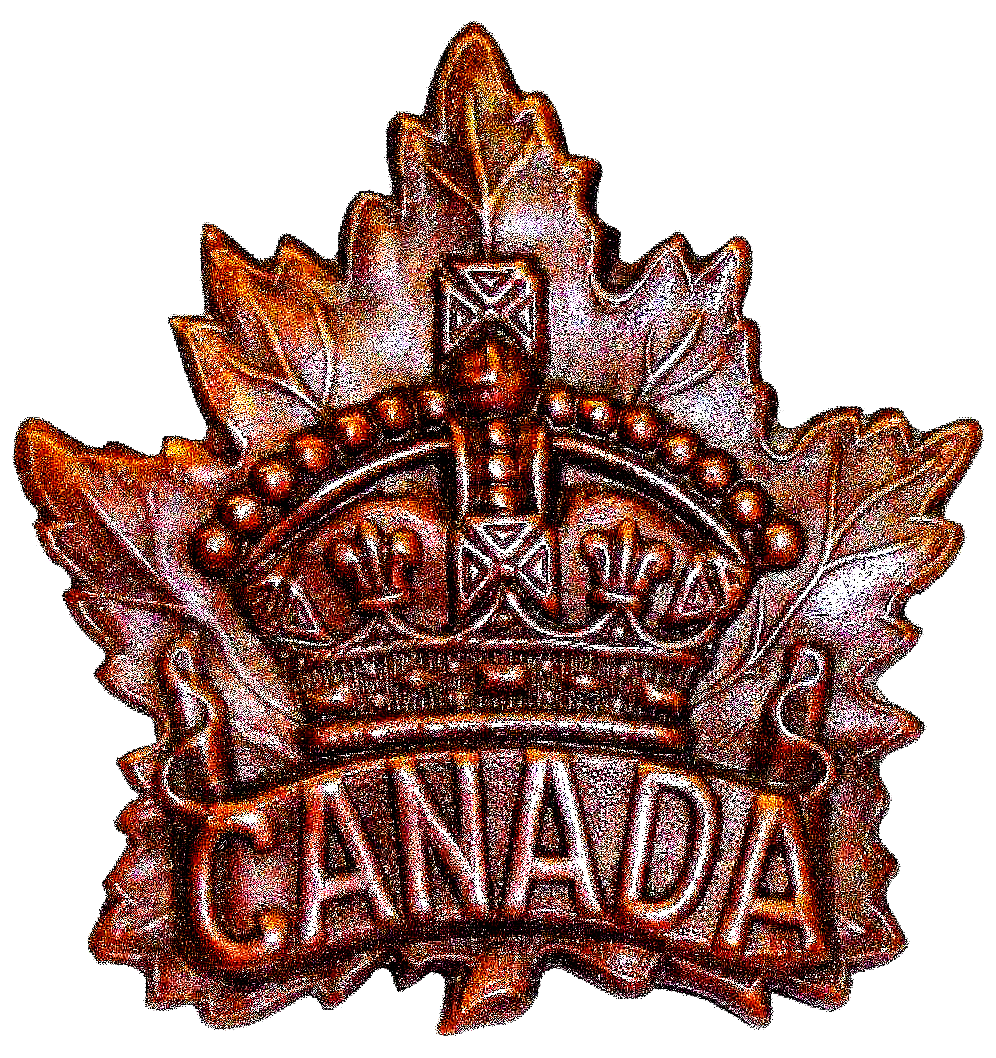
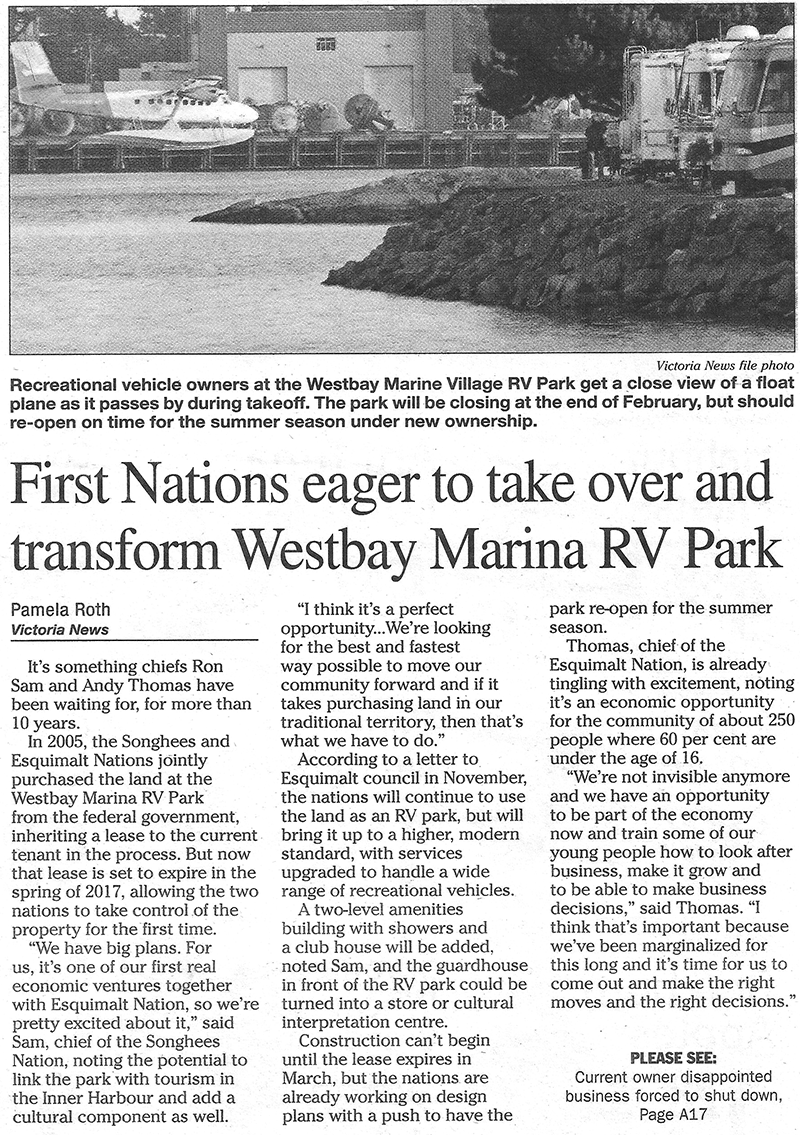
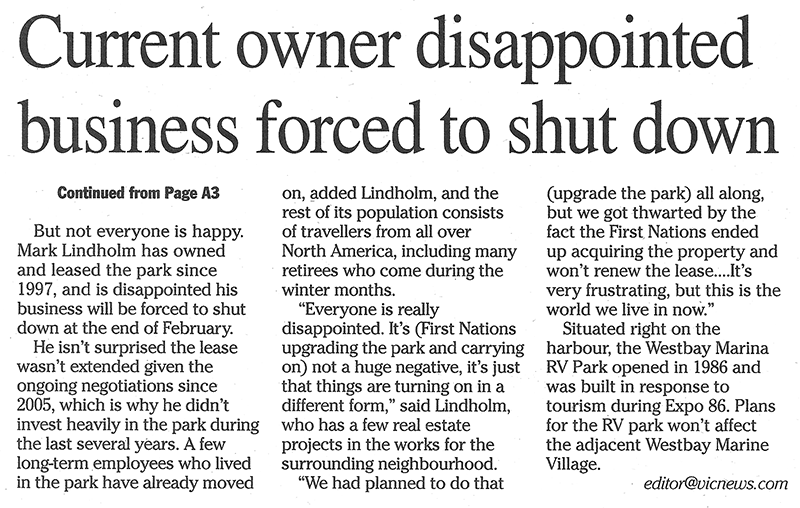
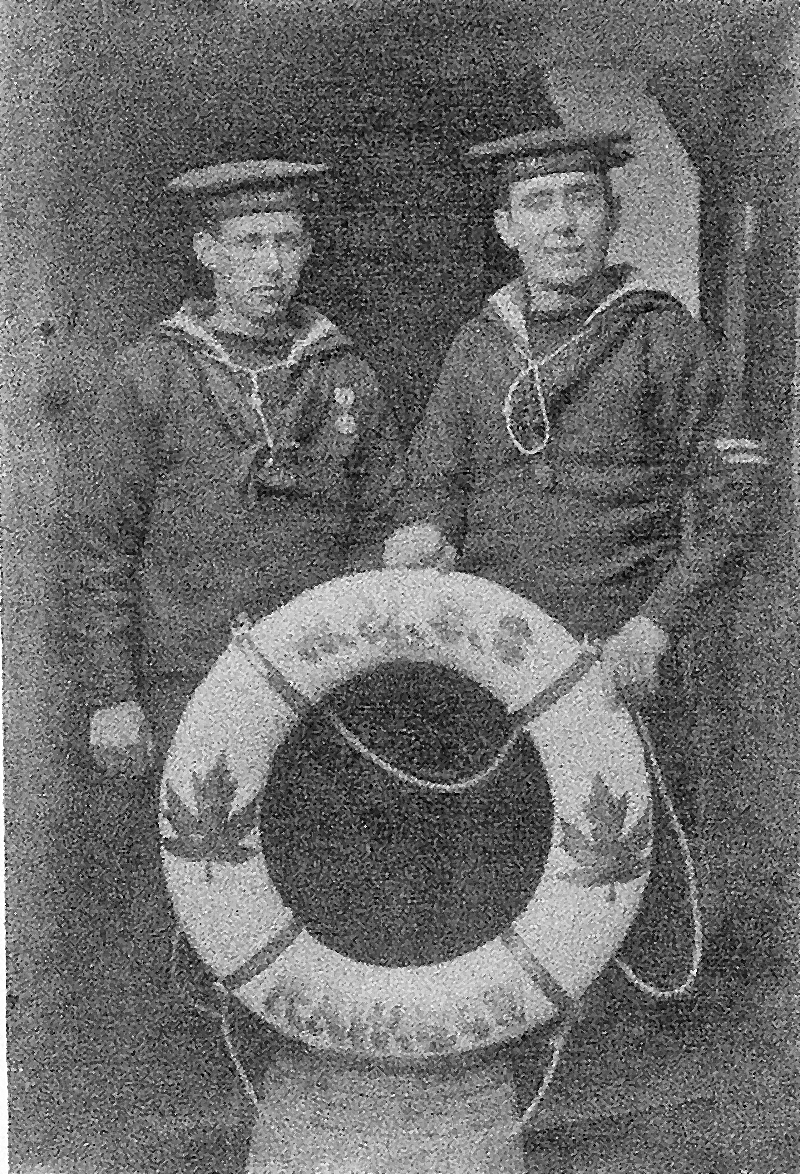
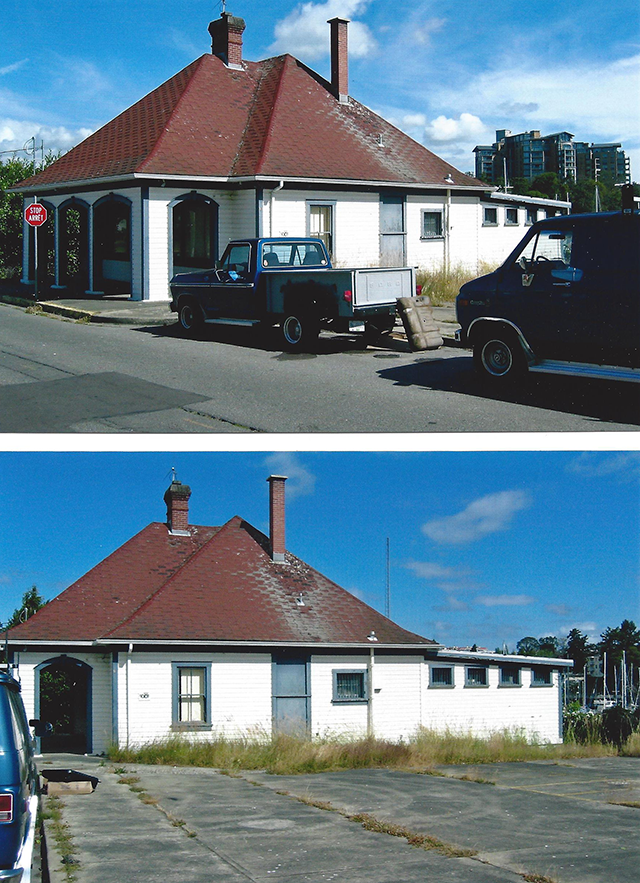
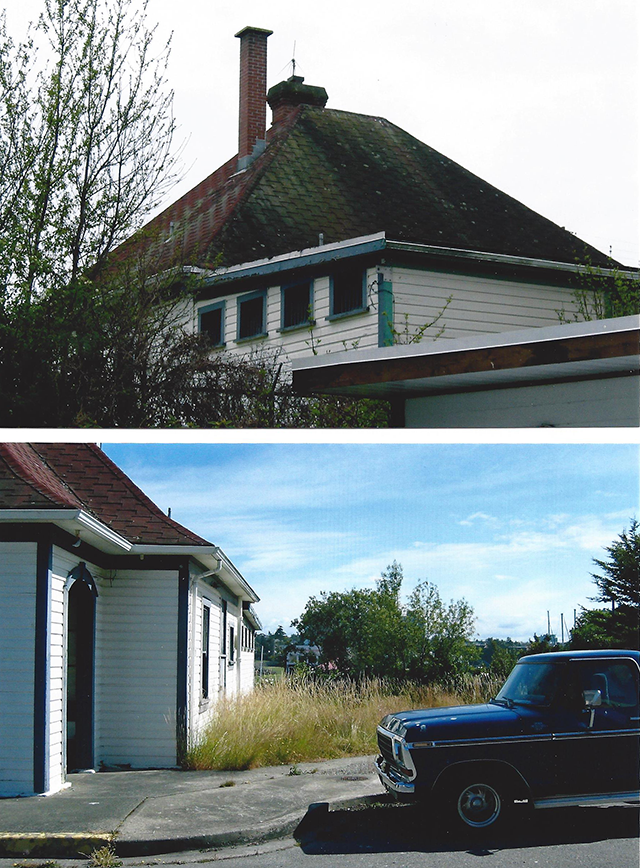
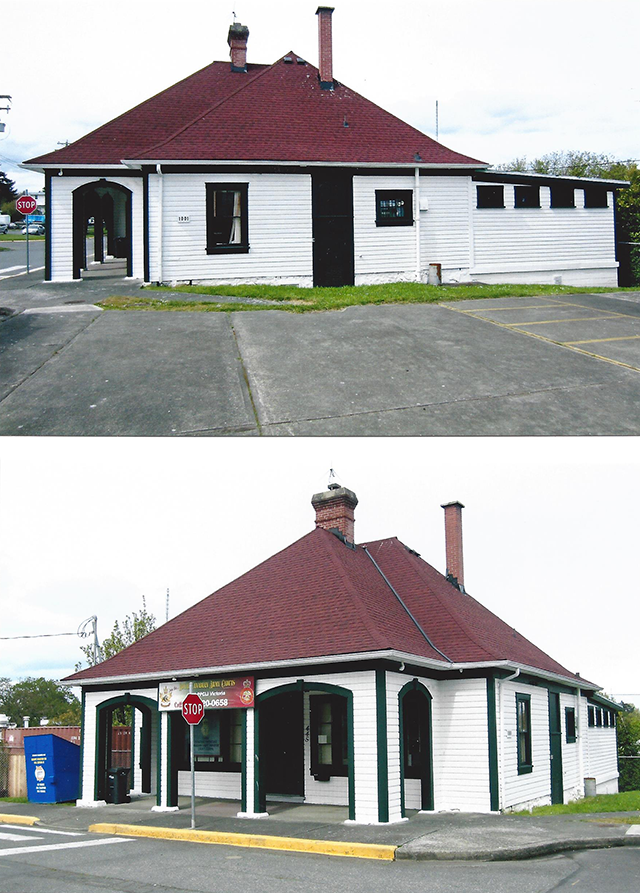
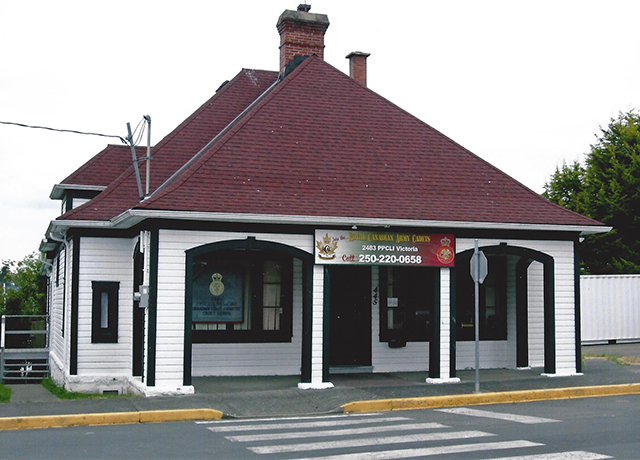
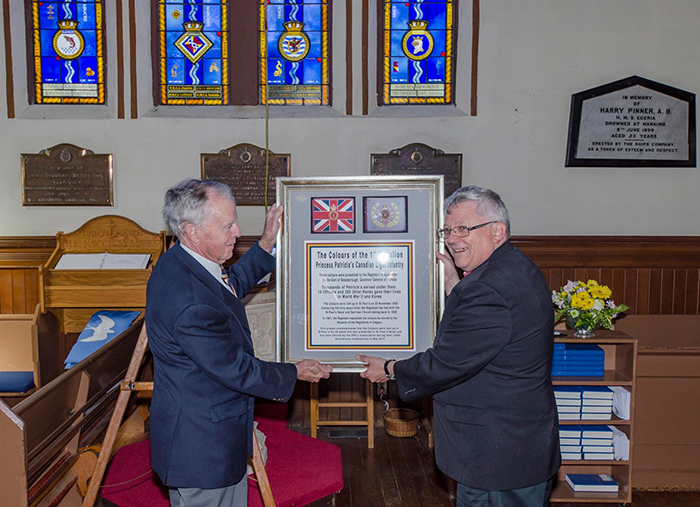
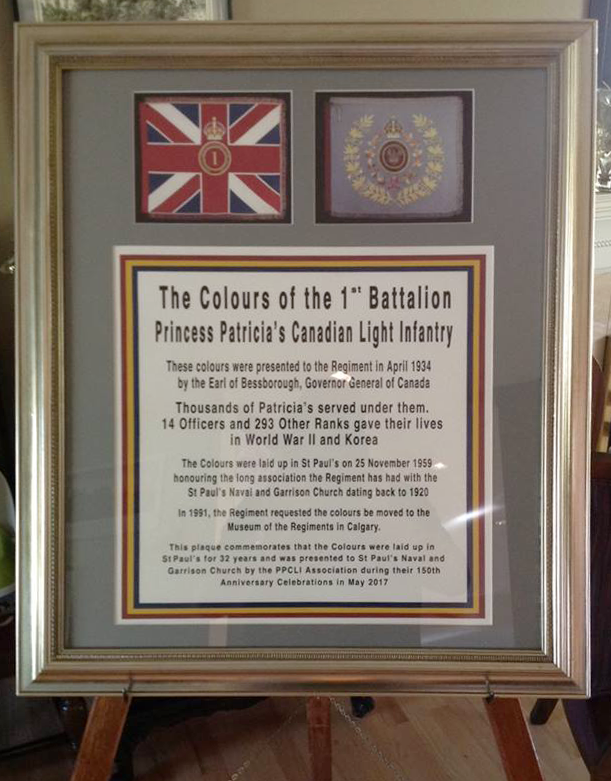
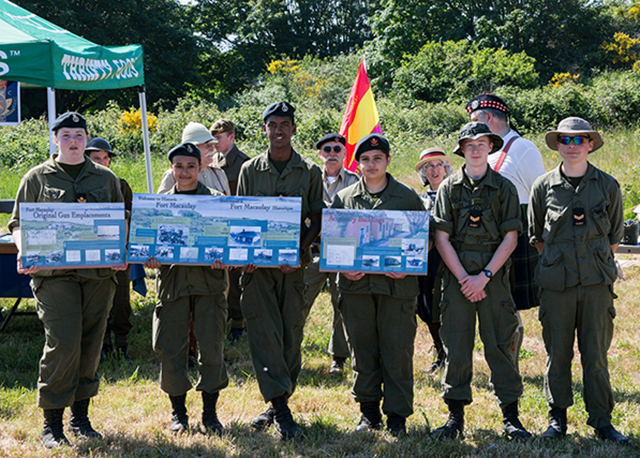
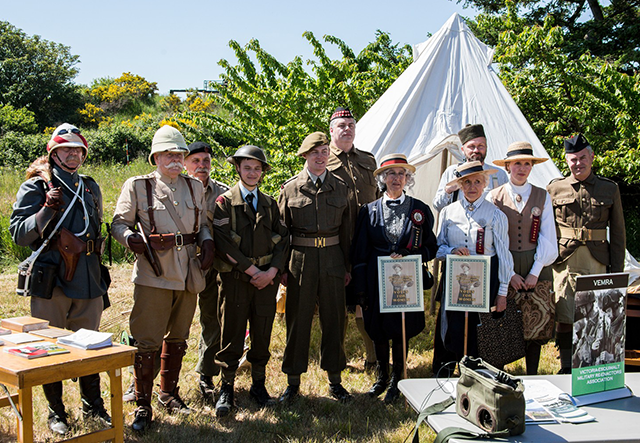
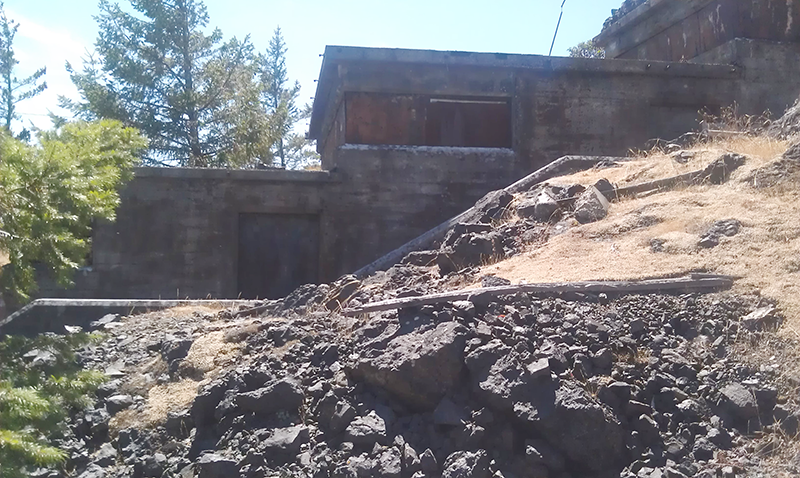
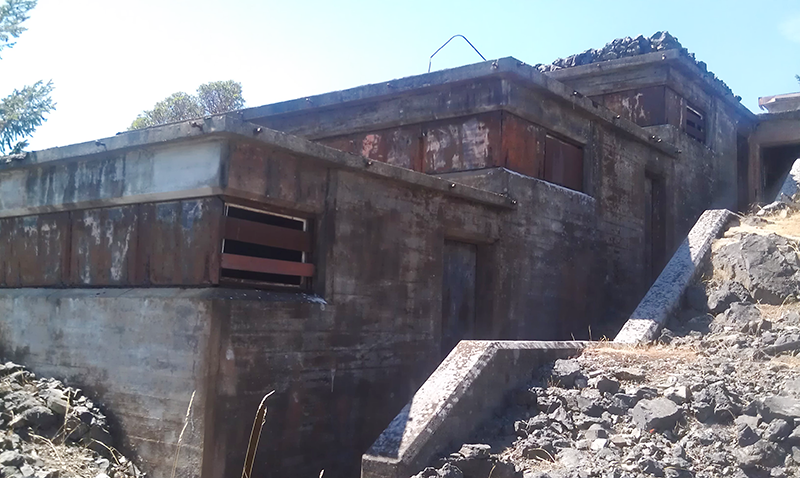
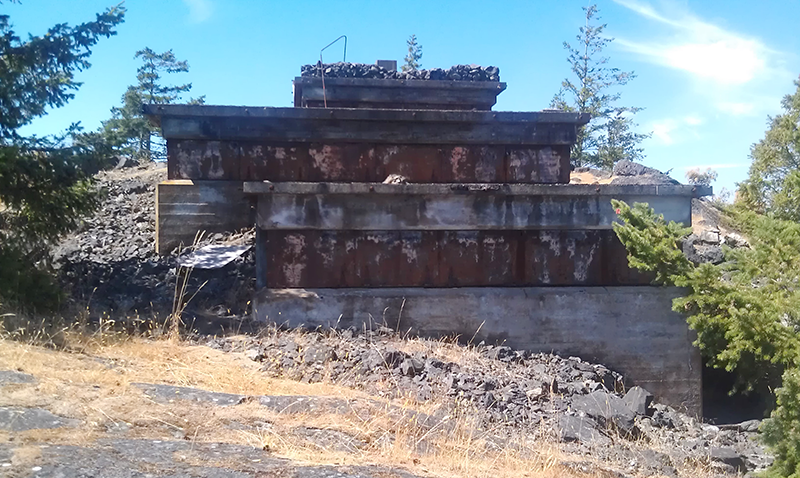
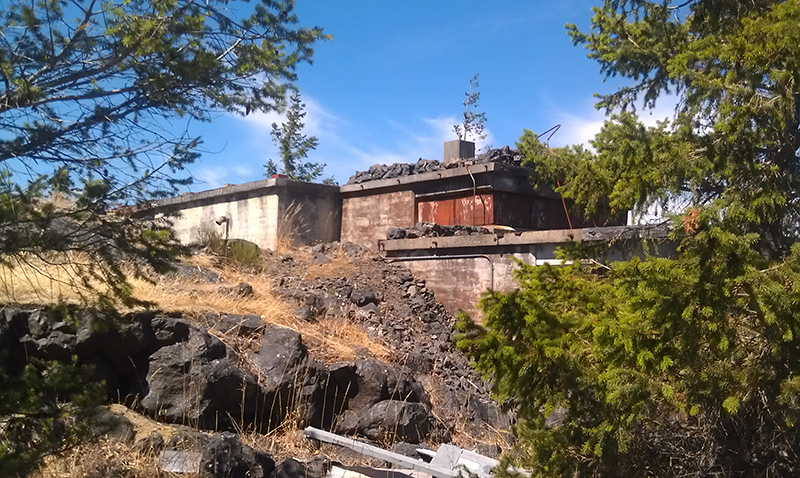
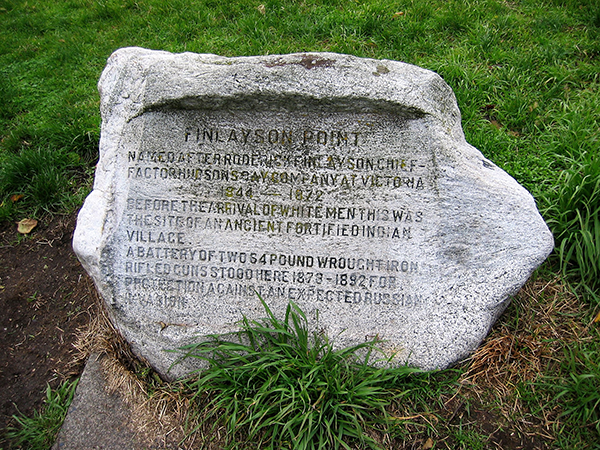
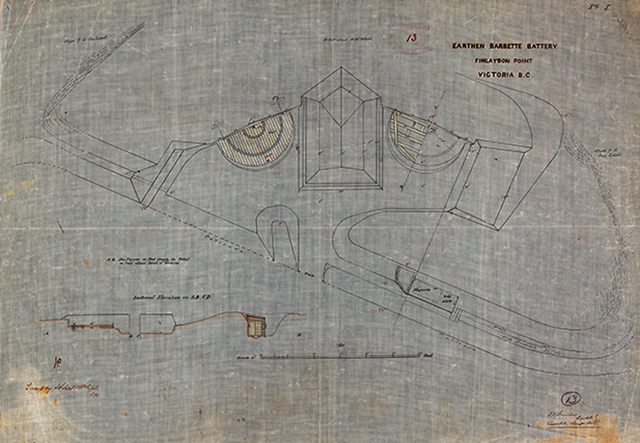
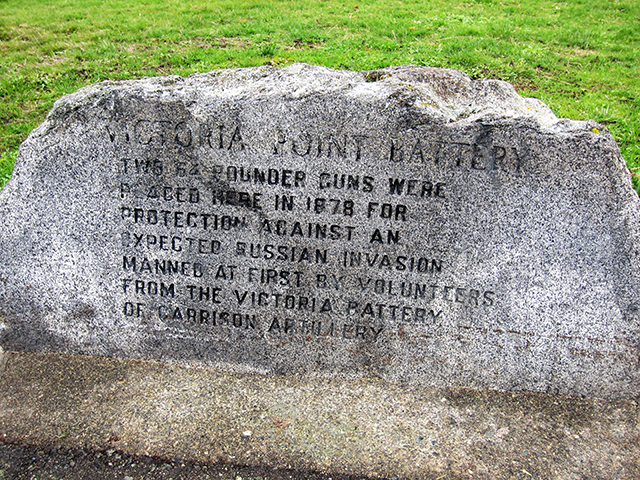
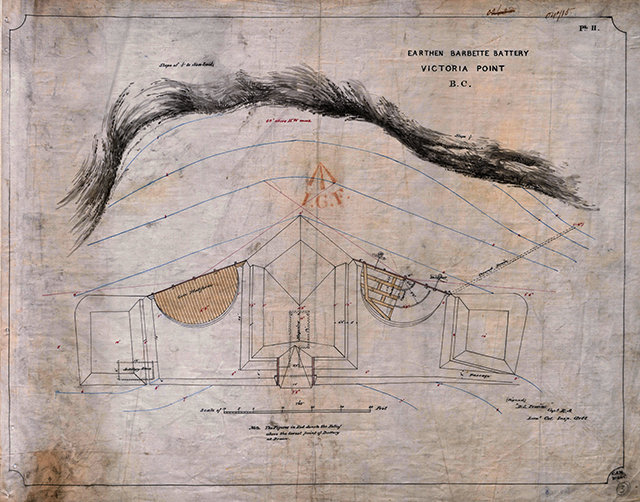
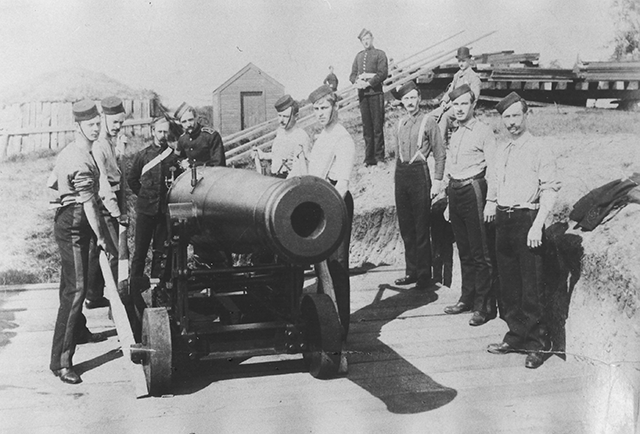
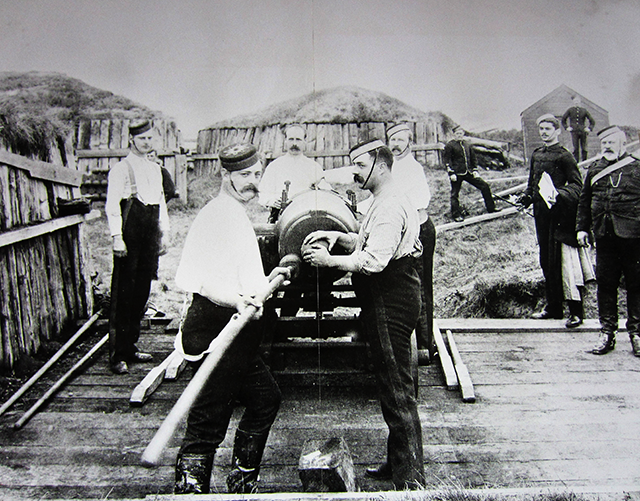
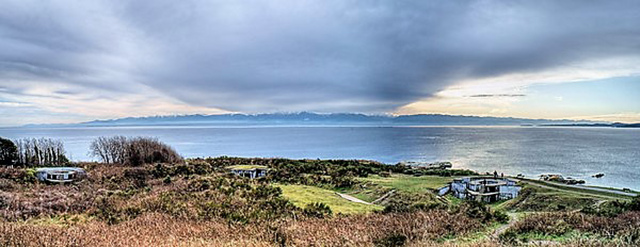
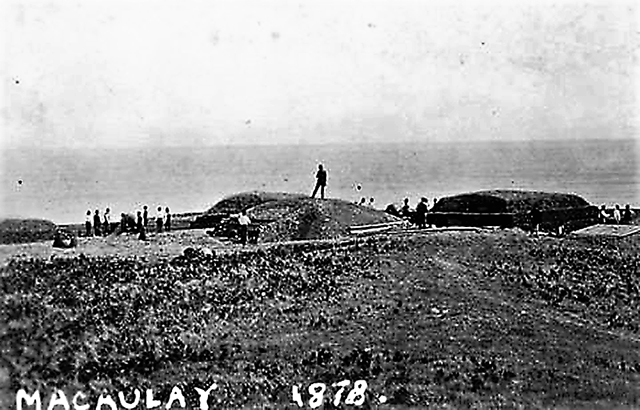
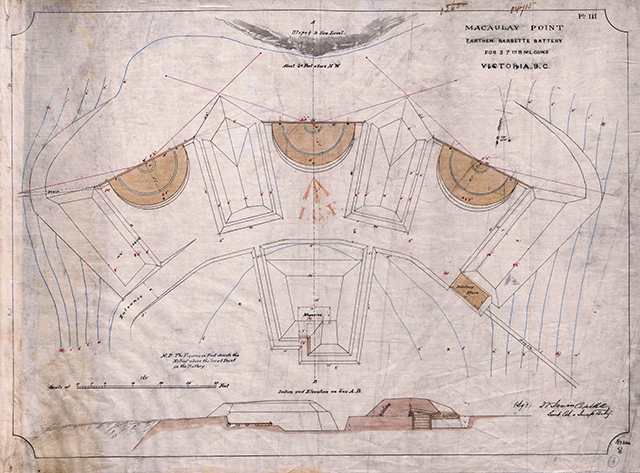
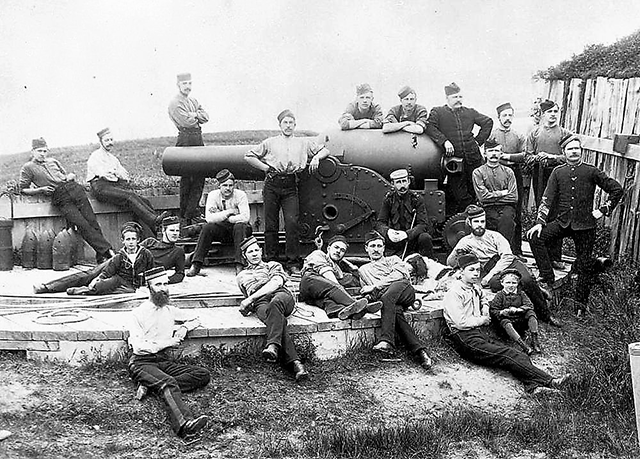
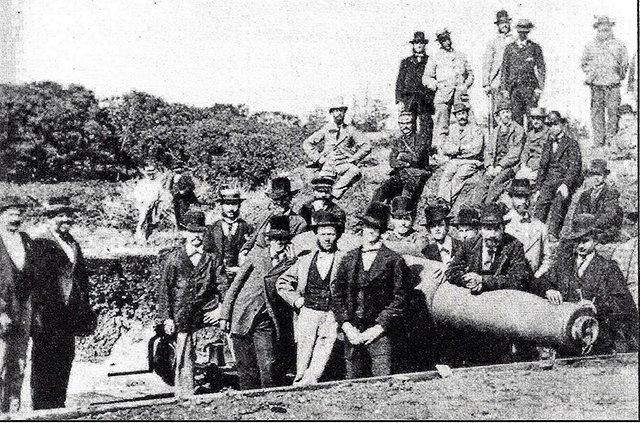
.png)
